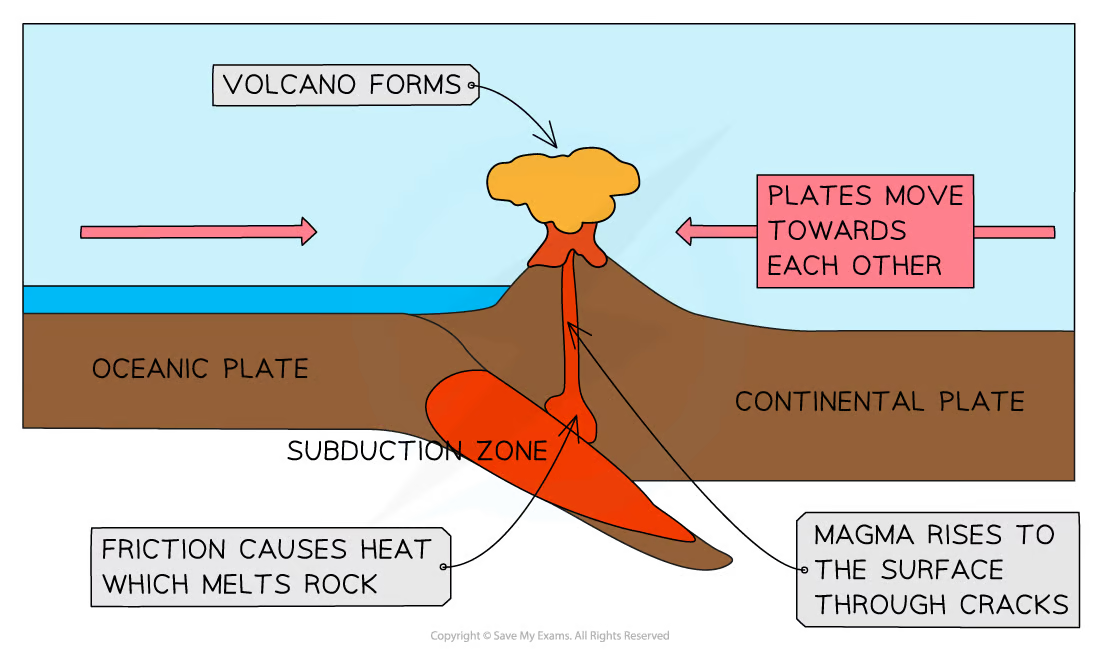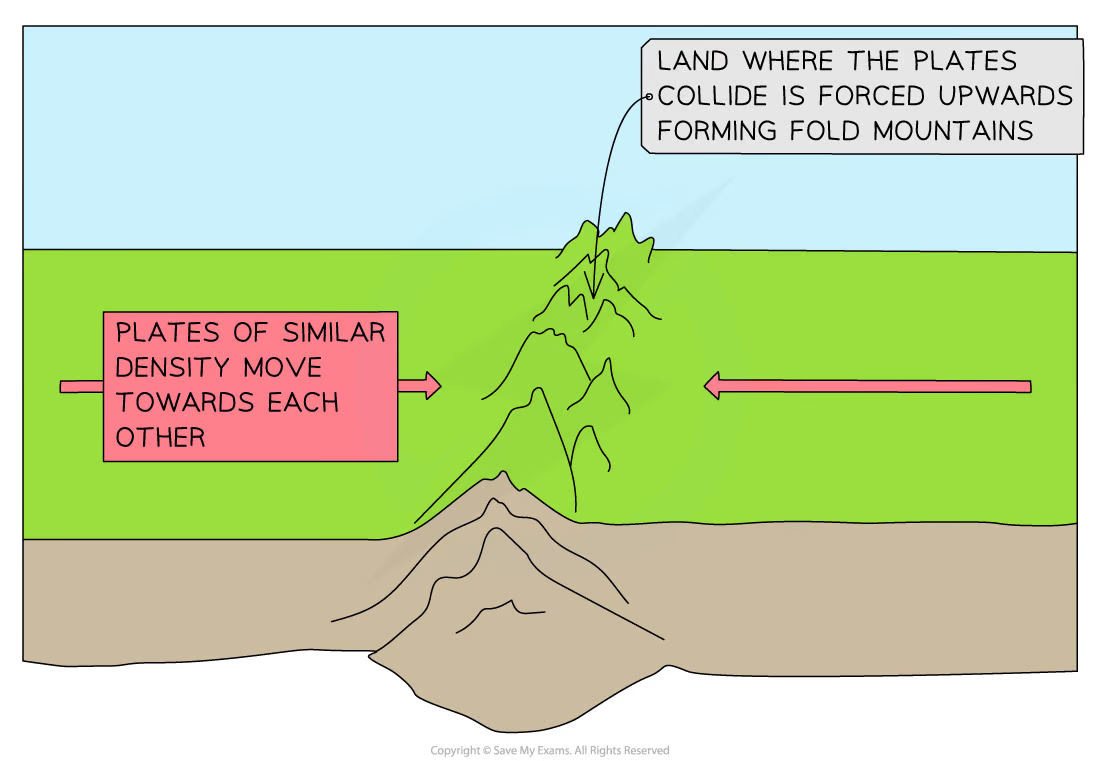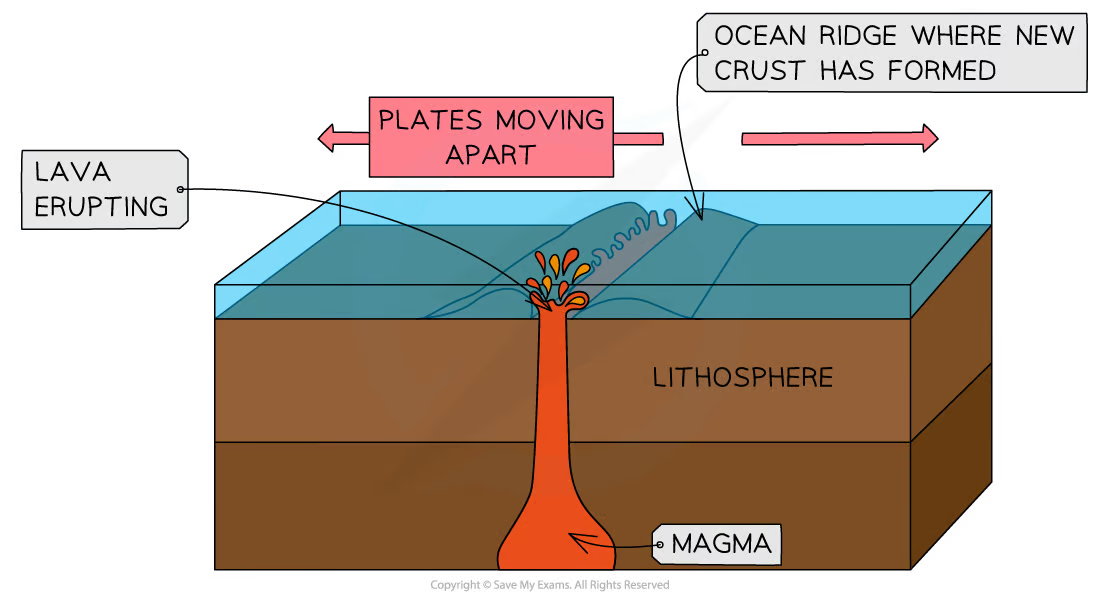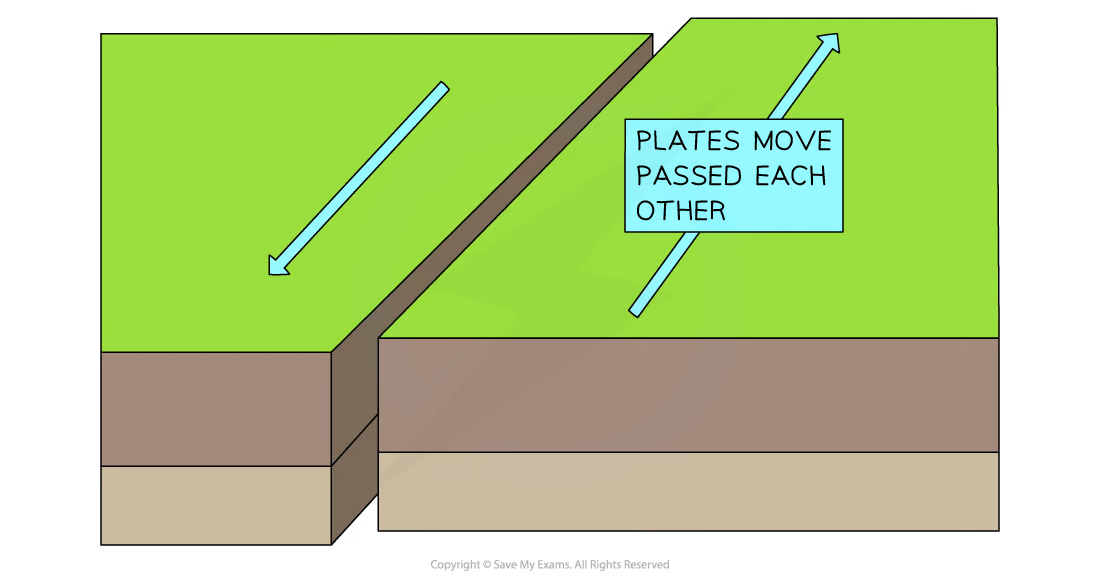Tectonic Plates and Plate Boundaries
Layers of the Earth
- The inner core is a ball of solid iron and nickel.
- The outer core is liquid.
- Around the core is the mantle, which is semi-molten rock the moves very slowly.
- The outer layer is the crust which is about 10-70 km thick.
- There are two types of crust: Continental crust - thicker and less dense, Oceanic crust - thinner and more dense.
Tectonic plates move
- The lower parts of the mantle are sometimes hotter than the other parts so when the lower parts heat up they rise to the top as they become less dense.
- As they move to the top they cool down becoming more dense again and sinking.
- These circular movements are called convection currents which cause the plates to move slightly.
Plate Boundaries
Destructive Boundaries
This is when two plates are moving towards each other.
When an oceanic plate meets a continental plate the denser oceanic plate is forced down underneath into the mantle and destroyed. This often creates volcanoes and ocean trenches.
E.g The Pacific plate being forced under the Eurasian plate along the east coast of Japan.

Collision Plate Boundaries
Both plates are made from continental crust and move together.
Neither plate is forced down so the plates are forced upwards and folded.
It creates fold mountains
E.g. The Eurasian and Indian plates colliding to form the Himalayas.

Constructive Boundaries
Two plates moving away from each other.
Magma rises to form the gap and cools to create a new crust.
E.g. The Eurasian plate and the North American plate are moving apart at the Mid-Atlantic Ridge.

Conservative Boundaries
Two plates moving past each other in opposite directions or in the same direction but at different speeds.
E.g. The pacific plate moving past the North American plate on the west coast of the US like the San Andreas fault.
